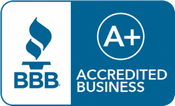
Withdrawals From Your 529 Can Be Costly Mistakes
Published on July 25, 2016
Didn’t summer just start? It’s hard to believe, but in just over a month, our kids will head back to school. For some of us, that means packing up a kid or two and sending them off to college, maybe for the first time. It’s a wonderful, joyous time...that comes at a price. If it hasn’t happened already, you’ll soon receive your child’s first college bill. And if you’re still standing after reading it, your first instinct might be to call up your financial advisor and withdraw money from your child’s 529 college savings plan and pay the full tab with those funds. Here’s why you should reconsider.
If you fall within certain income limits, you can take advantage of a generous federal tax credit known as the American Opportunity Tax Credit (AOTC)—but only after having paid $4,000 of tuition and certain other college expenses with non-529 money. IRS prohibits individuals from utilizing two tax benefits for education on the same education expenses. In other words, you can’t double dip. Using tax-protected 529 earnings to pay for your child’s first semester of college can disqualify you for the AOTC, which is worth up to $2,500. That is a large return on $4,000, so don’t be so quick to pay the whole bill with your 529.
Instead, carve out a $4,000 portion of eligible expenses and pay that from a cash savings account or even another education savings vehicle with tax benefits -- like a Coverdell. Anything that is not a 529 plan will keep you on track for the AOTC. Eligible expenses include tuition and required fees as well as course materials, such as textbooks.
You can claim the full credit if you have up to $160,000 in modified adjusted gross income on a joint return (or up to $80,000 for single filers). You can get a partial credit if your income doesn’t exceed $180,000 or $90,000, respectively. The credit can be used for a maximum of four tax years.
AOTC is set to expire at the end of 2017. If it does, the Hope Scholarship Tax Credit—which the American Opportunity credit replaced in 2009—will kick back in. That credit can only be taken for two tax years—rather than four—and the maximum credit amount will likely be less. In addition, fewer parents will qualify, as the credit historically had lower income thresholds than the American Opportunity credit. It’s important that you take advantage of the savings available to you while you still can.
Qualifying families that have a 529 plan will have to strategize about how they can tap into that plan and also take advantage of the credit. It’s not hard though. To avoid the possibility of losing part of the American Opportunity Credit, just don't use 529 funds until after you pay the first $4,000 in qualified education expenses.






